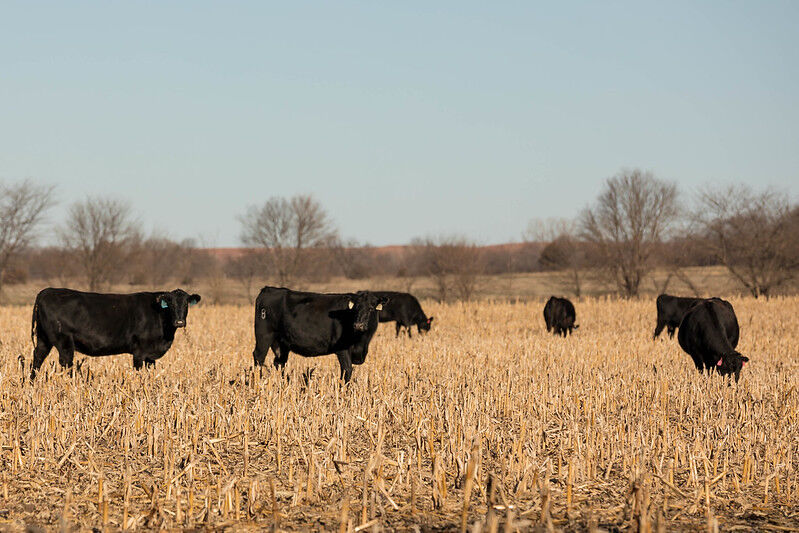Corn and milo stubble can offer short-term nutrition for grazing cattle

Crops that have been harvested leave behind residues that can serve as a feed resource for grazing cattle, said the experts at Kansas State University’s Beef Cattle Institute on a recent Cattle Chat podcast.
“Leftover husks and leaves offer good digestibility for the beef cow in mid-gestation,” said BCI nutritionist Phillip Lancaster. However, the stalks offer very little nutrition to the cows.
He added: “The cows will eat husks, leaves and any ears they find first and so the nutritive value of the feed resource will decline the longer the cows are out there.”
Lancaster recommended producers monitor the fields and offer protein supplements as needed.
Along with the declining nutrition, veterinarian Bob Larson cautions that producers need to monitor the herd for rumen acidosis, which can happen when a cow finds too much grain in the field following harvest. Typically, that happens when the cows eat too many ears of corn or consume too much spilled grain.
Larson said that a build-up of this acid in the rumen can cause a cow to stop eating, reduce its activity, have watery feces and in severe cases can lead to death.
“Cattle are good at finding grain spills and that puts them at a greater risk for acidosis,” he said.
The other health condition that can occur with drought-stressed crops is nitrate toxicity, said veterinarian Brian Lubbers.
“We’ve had drought this year so that is a concern for cattle grazing those fields,” he said.
K-State agricultural economist Dustin Pendell said producers should also consider the costs related to that grazing resource.
“There are expenses tied to hauling water to the crop field and, possibly, putting up fences that producers need to keep in mind when making a grazing plan,” Pendell said.
Larson reminded producers of the importance of monitoring the herd. “Every field is a little different in what it can provide, so keep an eye on your cows to make sure they are not falling behind on nutrition.”


